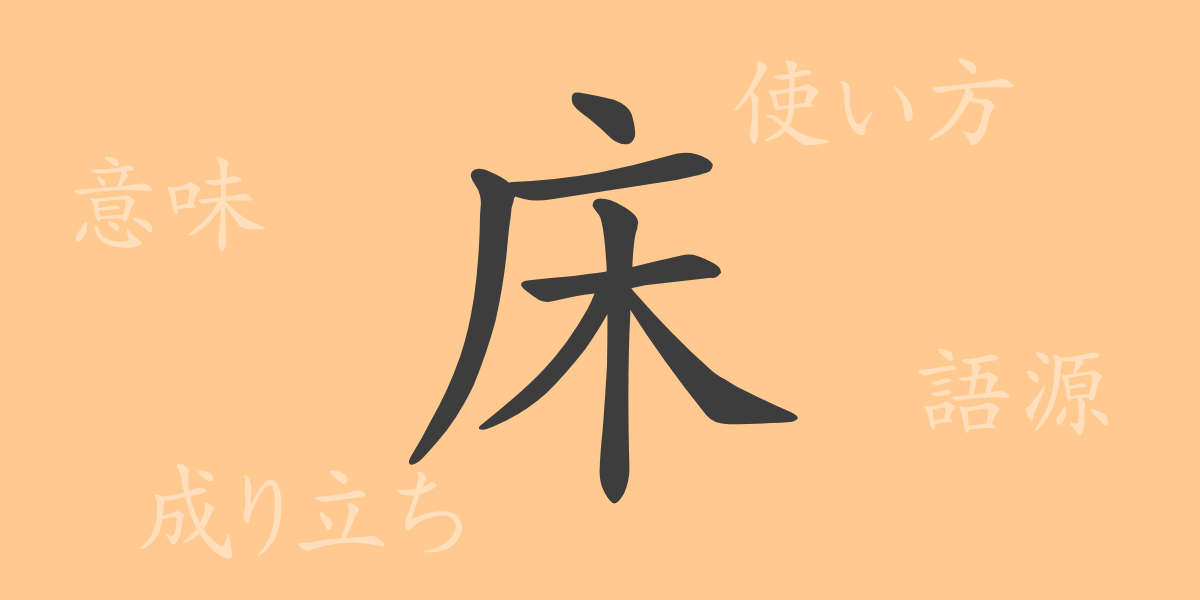The kanji ‘床’ (とこ, ゆか, しょう), deeply ingrained in Japanese culture, is frequently used in our daily lives, embodying much more than just a physical surface. This article explores the kanji ‘床’, from its origins to its meanings and usage, and delves into various idioms and phrases associated with it, inviting you on a journey into its profound world.
Origins of 床 (とこ, ゆか, しょう)
The kanji ‘床’ traces back to ancient China, where it was used to describe part of a building’s structure. Initially representing planks or tatami mats laid on the ground, it evolved to denote living spaces, specifically the floor area. Over time, it developed various meanings and implications.
Meaning and Usage of 床 (とこ, ゆか, しょう)
In modern Japanese, ‘床’ primarily refers to the floor inside a house. Beyond this, it is used in terms like ‘病床’ (びょうしょう, sickbed) or ‘床屋’ (とこや, barbershop) to denote specific places or situations. It also finds use in metaphorical expressions and abstract concepts.
Readings, Stroke Count, and Radical of 床 (とこ, ゆか, しょう)
Let’s explore the readings and structural details of the kanji ‘床’.
- Reading: The On’yomi (Sino-Japanese reading) is ‘しょう’, and the Kun’yomi (native Japanese readings) are ‘とこ’ and ‘ゆか’.
- Stroke Count: ‘床’ consists of 7 strokes.
- Radical: The radical is ‘广’ (まだれ), indicating a cover or shelter.
Phrases, Idioms, and Proverbs Using 床 (とこ, ゆか, しょう) and Their Meanings
There are numerous idioms, phrases, and proverbs involving ‘床’, each with its unique meaning and nuance. For example, ‘床に就く’ (とこにつく) means to go to bed, ‘床を共にする’ (とこをともにする) is a euphemistic expression for sharing a bed, implying a marital relationship. ‘床の間’ (とこのま) refers to a specific space in Japanese homes used to display art pieces. These expressions reflect the richness of the Japanese language and its cultural backdrop.
Conclusion on 床 (とこ, ゆか, しょう)
Through this article, we have uncovered the various facets of the kanji ‘床’. Evolving from a mere physical space to a word rich with cultural and lifestyle significance, ‘床’ has adapted to the lives and hearts of the Japanese people. It remains a cherished part of our language, reminding us of the intricate relationship between our words and our culture.

























